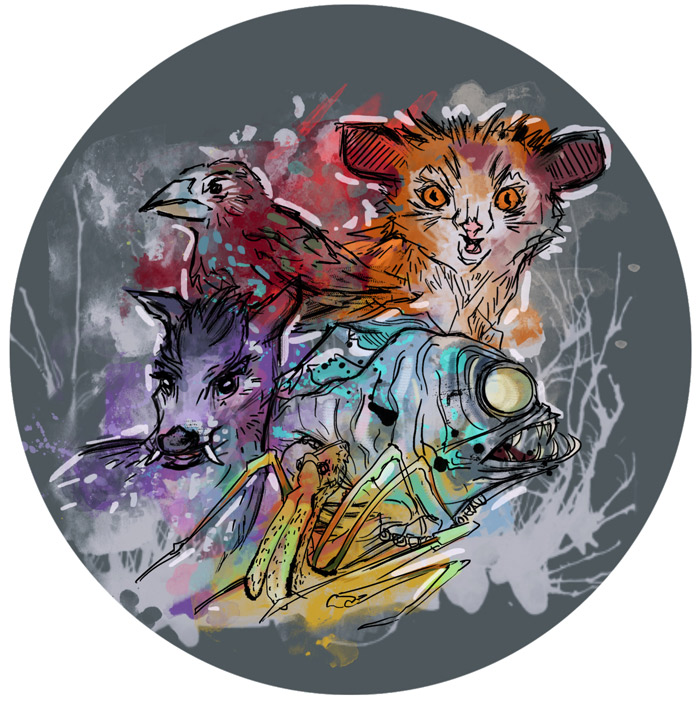Halloween and creepy creatures go hand in hand, but there’s more to the animal kingdom than the generic vampire bat or black cat. Here are five spooky animals to get you in the Halloween spirit:
Tufted deer
Found in the mountainous forests of China, Tibet, and Myanmar, the tufted deer is a dainty and elusive animal characterized by a small tuft of black fur on its forehead. At first glance, it looks like any other deer—until you notice their fangs. Males have protruding canines, known as tusks, that they use as weapons when competing for territories or females. Though females also have canines, they aren’t as long.
This physical difference between the sexes—called sexual dimorphism—may have been brought about by sexual selection, an evolutionary pressure that acts on an organism’s features, and thus, the ability of an organism to mate.
Despite their fangs, these vampire-like deer must still be careful of predators, and are endangered due to poaching and habitat loss.
Marine hatchetfish
These sea creatures live in most temperate waters around the world. Their large eyes that are very sensitive to light lead them to migrate to shallower waters at night and return to deeper depths during the day, where they hunt by looking for the silhouettes of their prey above them. Through the process of bioluminescence, these organisms create their own light. Using photophores—or light emitting organs that cause bioluminescence—many deep-sea ocean dwellers are able to survive in the deep dark ocean. Since they can live at depths of up to 1,370 metres, not much is known about the deep-sea hatchetfish—aside from the fact that they look like they’re about to suck out your soul.
Vampire finch
A subspecies of the sharp-beaked ground finch that is found in the Galapagos Islands, the vampire finch has developed an unusual behaviour to supplement its diet when seeds and insects are scarce; it picks at the feathers and drinks the blood of the blue-footed booby—a larger bird that inhabits the Islands. They have even been known to do so in large groups. In addition, vampire finches often eat other birds’ eggs by rolling them onto rocks so that they break.
Their behaviour is not as evil as it seems, however—nipping at other bird’s feathers is actually an example of a mutualistic relationship, in which both species benefit from the actions of the other. The finch is able to take in more nutrients, and in the process, remove parasites from the booby’s feathers.
Aye-aye
The aye-aye is found only on the island of Madagascar. A species of lemur, they are thought to be the only primate to use echolocation—he use of sound waves and echoes to determine where objects are in space—to find prey. They spend their lives in the trees and have an elongated middle finger to dig grubs out of holes in trees, and thus fill the same ecological niche as a woodpecker. Their large eyes and long, spindly fingers do make them look a little creepy; unfortunately, some locals in Madagascar kill the aye-aye because of legends that paint them to be evil spirits.
The aye-aye allegedly sneaks into the homes of nearby villagers and uses its elongated middle finger to pierce through their hearts while they sleep. The fact that the species is completely unafraid of humans does not help their cause.
Assassin spider
Assassin spiders, otherwise known as pelican spiders, are made to kill. Though they are slow rather than stealthy, their long neck and chelicerae—fang-bearing segments that are found on all spiders and allow them to inject venom—enable them to sink their jaws into prey from a relatively long distance. They were first discovered in 40-million-year-old fossils and were presumed to have gone extinct, until they were discovered in Madagascar in 1881. They have since been found in South Africa and Australia.
Humans don’t have to be worried about these creepy crawlies—but other spiders do. They don’t weave a web, hanging instead on a single line of silk at night and impaling wandering spiders with their jaws.
While these animals are all quite spooky, it’s important to remember that their scientific significance is not confined to Halloween scares. Their bizarre traits are the result of millions of years of evolution, and they each play a vital role in nature.








